Clearer, more transparent food labeling as a tool to promote healthier diets
A new study published in the journal Foods makes a call for better food labeling that includes measures of nutrient density and the impacts of processing. Authors suggest that improved labeling will increase the consumption of healthier foods and could transform how manufactured goods are processed, increasing nutritional quality.
Organic foods are grown with practices that reduce exposure to pesticide residues and increase micronutrients and antioxidants. Similarly, organic meat and dairy exhibit higher levels of heart-healthy fats. Processed foods that are certified organic prohibit synthetic flavors and colors and contain many fewer non-food ingredients, especially those that are found to be detrimental to health. More transparency in food nutritional quality testing and labeling would highlight the positive contribution of organic farming on phytonutrient levels, especially when expressed per calorie, as called for in the paper.
The authors of this study include the former Chief Scientist of The Organic Center, Dr. Charles Benbrook and Dr. Robin Mesnage. They highlight that modern diets, characterized by heavily processed foods and nutritional imbalances, are driving a diet-related health crisis in the United States and globally. Poor nutrition has led to widespread chronic health issues and soaring healthcare costs. Current dietary guidelines and labeling systems fall far short in addressing the links between nutrition, food quality, and disease. Consequently, improving food quality and encouraging healthier dietary habits have become public health priorities.
Efforts to improve consumer choices include new initiatives like the FDA’s front-of-package (FOP) labeling. These labels remain under development and aim to simplify key messages embedded in detailed nutrition-health studies. But they typically focus only on macronutrients without addressing other essential micronutrients and the impact of food processing and ultra-processed food consumption. Systems like NOVA, which classify foods by processing levels, and Europe’s evolving Nutri-Score, are beginning to gain attention as tools to aid consumer decision-making. Yet, questions remain about whether these labeling systems effectively influence healthier choices.
This research emphasizes the need for easier-to-understand food labels that highlight both nutrient density and processing impacts. One proposed approach is the NuCal system, which divides foods into “green” (nutrient-rich), “yellow” (moderately nutritious), and “red” (nutrient-poor) zones, helping consumers identify healthy options. This system categorizes food items based on nutrient density relative to caloric content, which can encourage shifts toward healthier consumption.
This type of comprehensive labeling could also incentivize food manufacturers to reformulate products for better nutritional quality. However, implementing effective labeling will require coordinated efforts from regulators, industry, and health advocates, along with transparent, science-based communication.
Despite the challenges, improving labeling and food quality has the potential to drive significant health benefits. The societal return on investment from clearer, actionable food information could be substantial, promoting better diets, reducing chronic diseases, and advancing public health.



